#because of its groundbreaking representation particularly in that genre
Text
World Cinema Blog Week 2 - By Natalyn Wakeling
Room at the Top 1959
The film I chose to watch this week was Room at the Top, directed by Jack Clayton. It was released in 1959. To me this film is remarkable because it is quite provocative for its time. The plot of the movie is Joe Lampton wanting to marry rich to Susan Brown, but truly falling for the married Alice Aisgill. Alice Aisgill is referred to as an "old whore" on multiple occasions throughout the movie, but Joe did not see her as such. Susan Brown seems the type he really should be falling for. She is young, wealthy, and beautiful, but he can not find passion with her. Critics describe this movie as "the first in the British New Wave movement, which centered on stories about the struggles and miseries of the working class". (4Columns.org) This movie made way for many movies to come after it, by showing these class struggles through Joe and his interactions throughout the film. An example of Joe's struggle with his class is on multiple occasions when Joe expresses his interest in Susan, he is told by both wealthy and working class folk to "stay in his class". This film is made after the John Braine Novel Room at the Top 1957.
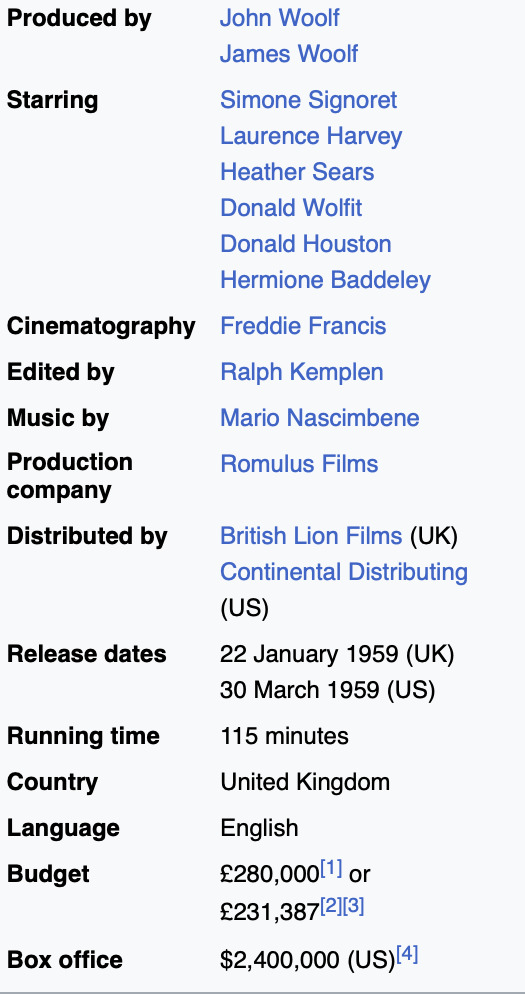
Here is a look into how there film performed objectively. The British film costed $280,000, and did 2,400,000 in the Box Office. This shows that the movie performed quite well. I think this film was able to gross this amount of money because it was very relatable for the times. A movie made on the struggling British working class, along with a very intriguing romance plot is bound to do great things when it is released. The film was marketed under the genre of "romantic drama", which is also a genre of film that does great when it comes to gaining an audience.
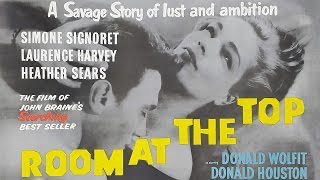
Room at the Top is greatly acclaimed among critics for setting the path of representation of the working class in British cinema. The guardian describes it as "a film that genuinely changed British cinema for ever." (Review by the Guardian) The Guardian describes the film as being mainly marketed as a story of "lust and ambition", and drew viewers in to experience one of the most emotionally devastating and groundbreaking films ever done in British cinema. The guardian explains that at the time of release, British critics were not particularly happy with some parts of the production and release of the film. They did not appreciate that is was not directed by one of the famous Oxford directors. Jack Clayton was only a military man with very little Cinema experience. They also didn't appreciate that the finances of the movie were focusing more on making it a commercial hit rather than catering to the works of the Royal Court Theatre. Based on the standard audience reviews, the movie seems to have struck very well with viewers. "A masterful film in all aspects, full of strength", is a very well rounded comment for the general consensus of the viewers of this film (rottentomatoes.com)
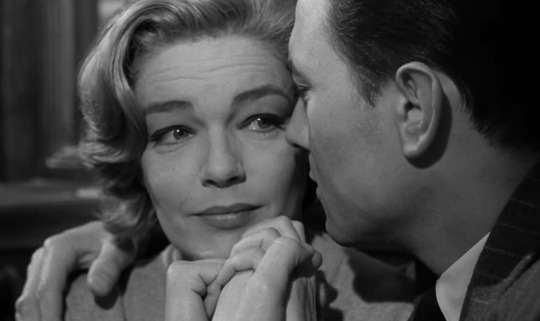
Historically, this film really resonated with many because it was relatable. The British class system was as definite as ever from the 1950s-1960s, and this movie does a very good job of depicting that. The British were decolonizing during this time period, leaving them with less money and resources, setting the tone for the class system. (study smarter.us) This film does a great job of representing classism in multiple ways through Joe Lampton. When Joe is working class, he is told off by many people to look for marriage in his own class. Then, in the end when he is about to marry into the Brown family and is seen in the bar conversing with a lower class woman, he is once again told to stay with his class, this time meaning his upper class. This just shows how great a role class played during this time socially, and how difficult it really was to change your class status. This film overall paved way for more films like this to come on the class system in British Cinema.
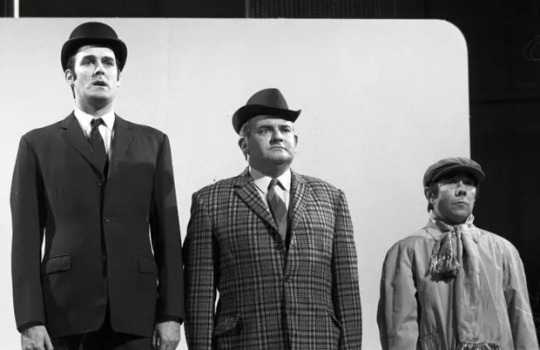
The way the movie is done clearly displays the British class system during this time period. A remarkable moment in the film is when Joe goes to visit his childhood home that was hit by a bomb. It was in wreckage, however, there were people so poor that they were still living in this wreckage of a home. This really plays into demonstrating how the lower class was living at this time. Joe was a great depiction of working class. He was working a job and barely making ends meet, but he still had enough to live decently and make connections. The upper class is well depicted by Susan Brown and her family. Joe Lampton describes her home as a castle, and their family uses their money as a power play to intimidate those under them.
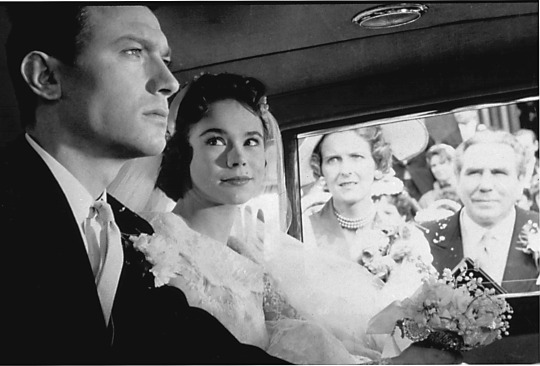
This particular image really encompasses the meaning of the film to me. Joe thought all he ever wanted was a young, good-looking, and rich woman. In this moment after he is married, he realizes these things will never equate to the passion he felt with Alice. As poor and old as she was, these were the true riches of life that Joe lost. The look of emptiness in this shot is his own guilt for feeling as though he had murdered Alice after her death, because she had nothing to live for but their love. During its time I think this film was very striking because it was marketed as "lustful and ambitious". While this movie is both of these things, it has a much bigger theme that definitely resonated with the audience and stood out from other films during this time period. For a film to be ground breaking and path paving, it needs to do something different from other films. I think this film was ground breaking because it addressed the class system, while also giving one of the most emotionally devastating romance stories along with it.
youtube
I believe this film to be quite easily defined as conventional. While it is testing and provocative, it was done after a novel which already makes way for the movie to do very well. The finances of the film were criticized for striving to commercialize this film by marketing the provocative love story far more than they marketed it as a movie displaying British class systems. The film had very famous actor of the time Simone Signoret, who plays Alice, which is also bound to commercialize the film. The basis of the film is quite easy to understand, and appeals to a wide range of audiences, making it easy to sell. The film was marketed in a way that makes it conventional although it has some unconventional factors. One being the unique idea of bringing class into a film. This was not done before in British cinema, which could be potentially controversial, however, it made it big and set way for many movies after it.
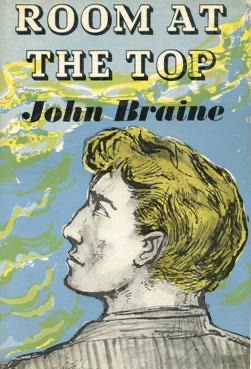
All in all, this film was not only a commercialized, intriguing romance, it was a ground breaking film that introduced the issue of the British class systems. It paved the way in British cinema, and forever changed the way films were made after its release. It was something that had never been done before in its time, and even has some uniqueness to anything I have ever watched to this day.
7 notes
·
View notes
Text
A Completely Objective and Logical Ranking of Every Hetalia Character Song
New character songs are dropping, I have too much time on my hands, let’s go.
Also here’s a Youtube playlist for the ~✨nostalgia✨~
Bring it on in the tags
71. Ah Legendary Class⭐The Awesome Me Highway [Prussia]: Absolutely tearing it up on the drums and on the vocal cords alike (I pray for Atsushi Kousaka). Great for the memes.
70. Happy Thoughts Museum [???]: This is listed as an official song but I had literally never heard of the title. Then I listened to it and BAM! Smack back to 2013 watching the teasers for the show on Funimation. Not sure I’d count it as a character song though...
69. (Nice) My Song that is written by me for me [Prussia]: Deafened me but I can appreciate the industrial grind.
68. My House is...Quiet. ~With the Trolls~ [Norway]: I have never heard this song, nor can I find any version of it online. By default it goes here and I am so sorry Norge.
67. Make a Wish to Santa♪ [Sealand]: The discordant notes and childish exuberance only serve to make this sound like a demonic plea to Santa to eliminate the singer’s enemies.
66. Heaven and Hell on Earth [Rome]: Rome sounds like he’s been in the corner of a restroom. Extra points for the metal version, minus points for the fact that the beach scene was replayed like 1764 times.
65. Canada Complete Introduction [Canada]: Quiet af until Kumacheerio shows up and blows out your speakers. they did you dirty my darling 😔
64. It’s Easy!!! [America]: I don't think any video of this has ever stayed up for more than 20 seconds. Sounds cool, but like I was listening to 20 different genres at once, someone make him calm down.
63. Bù Zàiyì the Small Stuff ☆ [China]: I cannot for the life of me find the complete song anywhere, clips have a cool beat though
62. Let's Boil Hot Water♪ [Italy]: Exactly what it says on the tin..though a bit too close to elevator music for my tastes.
61. The Fragrance of Early Summer [Japan]: Very ‘from the books’ Japan-esque song
60. Peace Sounds Nice…[Baltic Trio]: All well and good until the radio demon shows up
59. W●D●C ~World Dancing~ [America]: How a song can sound like it’s from 4 different decades at once is beyond me
58. Overflowing Passion [BFT]: This is just drunken karaoke and I have 0 clue what’s going on #iconicforallthewrongreasons
57. Ren●Ren●Renaissance♪ [Rome+Chibitalia]: Wholesome Grandpa with Grandson content - barring the fact that Italy sounds on the verge of a nervous breakdown and Rome has had too much wine.
56. Roma Antiqua [Rome]: Similar energy to any one of China’s songs - there’s a part of the song where it sounds like he’s singing in the shower, and I will never not laugh at [CENSORED]
55. Country From Where the Sun Rises, Zipangu [Japan]: Very chill, very Japan, but just meh for me.
54. Moon Over Emei Shan [China]: Good message, okay song.
53. My Friend [England]: What a mind palace you must have Mr. Kirkland
52. With Love, from Iceland [Iceland]: Three words: Heavy. Metal. Puffin.
51. Having Friends is Nice...♫ [Russia]: Russia is the cutest thing ever
50. Mm. [Sweden]: Smooth transition from WWE Smackdown to shopping at IKEA.
49. Why don’t you come over? ~Beyond the Northern Lights~ [Iceland]: I don’t want to be mean but...this does sound like the second closing theme to an anime whose first closing was much more popular (à la Soul Eater)
48. Gakuen☆Festa [Germany, Italy, Japan]: Sounds like a 60s song of the summer but oh dear their voices do not go together. Hella cute though.
47. Wa! Wa!! World Ondo [Main Cast]: One time I travelled 10 hours in a coach bus with a bunch of teenagers to a city of note in my country, and the only souvenir I bought was the fucking PAINT IT WHITE DVD. Perfectly chaotic, UN ĐĕùX~~
46. In the Bluebell Woods [England]: In the album cover for this song he’s holding a guitar but this is not a rock song. Still has ‘running through the hills’ levels of dramatism though.
45. Poi Poi Poi♪ [Taiwan]: You’re telling me that Taiwan, someone whose has *ONE LINE* in Beautiful World (which is criminal tbh what kind of representation-) managed to get an eNTIRE CHARACTER SONG???????
44. White Flame [Russia]: There’s something to be said for a song that is 3x the length of any Hetalia episode
43. Ich liebe… [Germany]: Baking cakes for your friends has never been so wholesome.
42. We Wish you a Merry Christmas [America, China, England, France, Russia]: Nice to see they’ve gotten their shit together since United Nations Sta-hmm.
41. Ah, Worldwide à la mode [France]: Sounds like a Disney Princess song, hard not to picture France frolicking in a field of flowers.
40. Che Bello! ~My House is the Greatest!⭐~ [Italy]: Would not be out of place in an advertisement for Sea World.
39. May You Smile Today [Japan]: THE feel good song of the summer
38. Let’s Look Behind the Rainbow [Italy]: I will protect you.
37. I'm your HERO☆ [America]: “Anyone who’s sad or sullen will be arrested” did NOT age well.
36. Mein Gott! [Prussia]: Alternating headphone effect at the beginning is cool, so is the confidence...the actual singing on the other hand...
35. Nihao⭐China [China]: Listen, all of China’s character songs are great, I just can’t vibe with this one like some of the others.
34. Pechka ~Light My Heart~ [Russia]: I’m still having difficulty wrapping my head around the fact that this and Winter were released at the same time.
33. Pukapuka⭐Vacation [Germany, Italy, Japan]: Seems just a bit too much like they’re running on a treadmill that’s picking up speed and trying to sing at the same time. Peppy.
32. Santa Claus is Coming to Town [Germany, Italy, Japan]: This is unironically the best song sung by this trio; can only vibe with for two months out of the year though.
31. Excuse Me, I Am Sorry [Japan]: Japan’s character traits speedrun. Gives me barbershop quartet vibes for some reason but is catchy as hell.
30. The Story of Snow and Dreams [Russia]: A superhero anime opening in the making
29. England’s Evil Demon Summoning Song [England]: Sir that is not how you roast a marshmallow, don’t cut yourself on that edge.
28. Moi Moi Sauna♪ [Finland]: Exactly the type of song you’d expect and it’s wonderful
27. United Nations Star⭐ [America, China, England, France, Russia]: This isn’t as much of a song as it is a four minute struggle for everyone to sing without America yelling every 5 seconds...Like a particularly musical episode of Hetalia.
26. Paris is Indeed Splendid [France]: Paris-pa-pa-pa-paris
25. Absolutely Invincible British Gentleman [England]: Poppy, rocky, polka-dotty
24. Vorwärts Marsch! [Germany]: To quote the comment section: “This sounds like a German version of I’ll Make a Man out of you.” There’s some truth to that.
23. Hamburger Street [America]: The product of America’s rapper phase. 8/10 because he’s trying so hard and because I can unironically sing along to all of this.
22. Hoi Sam☆Nice Guy [Hong Kong]: A song that would absolutely destroy the ankles of anyone in DDR.
21. I Am German-Made [Germany]: There was once a version that had Germany and Prussia singing at the same time and it sounded positively demonic and Broadway could never
20. La pasión no se detiene ~Unstoppable Passion~ [Spain]: Talented, brilliant, incredible, amazing, show-stopping...
19. Fall in Love, Mademoiselle [France]: Sounds like it should be in Mozart Opera Rock, I have kiss kiss falled in love.
18. Embrace the Très Bien Moi [France]: This is the definition of SELF LOVE PEOPLE.
17. Carrot and Stick [Belarus&Ukraine]: Absolutely DRIPPING in 2000s power ballad energy. The type of song that plays on repeat in the mind of the widow whose millionaire husband ‘mysteriously disappeared’ (and the only legit character song ever acknowledged by the anime)
16. C.B.C (Cowboyz Boot Camp) Vol. 1 [America]: AH MAH GAWWDDD
15. Winter [Russia]: Heavy metal fever dream and the perfect song for an angst-ridden teenager
14. Seychelles Here ⭐ Vacation Island [Seychelles]: UN👏DER👏RA👏TED SONG👏OF 👏THE 👏SUM👏MER👏
13. Nah, it will settle itself somehow [Romano]: One day I aspire to reach this level of chill
12. Let’s Enjoy Today [England]: I will never not feel happy when listening to this.
11. Einsamkeit [Germany]: Ludwig manages to air every single one of his worries about not being good enough compared to his friends and always being perceived as mean or uptight when he’s actually just a softie and now my heart hurts. 💔
10. Aiyaa Four Thousand Years [China]: A very poignant and beautiful song about the passage of time and the inevitability of its passing; comparable to an ancient ballad complete with explosive crescendos and meaningful lyrics.
9. Bon Bon Bon❤️C’est Bon C’est Bon! [France]: Peppy, cheerful, adorable, groundbreaking; has been my alarm tone for six years and I’ve yet to tire of it. 9/10 The moaning interspersed throughout has been an interesting wake-up call.
8. Let’s Enjoy! Let’s Get Excited! Cheers! [Denmark]: This is on par with Everytime we Touch by Cascada in terms of rage potential unlocked (the good kind)
7. Dream Journey [Japan]: Whoever’s playing the shakuhachi is absolutely KILLING IT. Dramatic, wonderful, great metaphors.
6. Gourmet’s Heart Beginner Level [China]: Absolute banger, I’m a vegetarian but this would inspire me to eat shumai.
5. Always with you...Nordic Five! [Nordic FIVVVVVEEEE]: Everyone harmonizes beautifully except for Denmark. Extremely catchy, number placement seemed appropriate.
4. Pub and GO! [England]: I love this trash man
3. Maji Kandou⭐Hong Kong Night [Hong Kong]: If you thought Denmark’s song was a banger JUST YOU WAIT. I WILL BLOW OUT MY SPEAKERS LISTENING TO LO-HA-SU.
2. Steady Rhythmus [Germany]: THIS SONG IS METAL AF. Seriously, if it can be classified as ‘hardcore’ by my father and his group of 50-somethings who have decided to single-handedly gatekeep the metal and hardrock genres, it can do anything.
1. The Delicious Tomato Song 🍅 [Romano]: Beautiful, absolutely awe-inspiring, poignant, catchy lyrics with an extremely deep meaning that only years of meticulous research and analysis can unlock, Romano I love you.
BONUS: Closing Songs
5. Hatafutte Parade (World Series)
4. Hetalian⭐Jet (The World Twinkle): The song is good, the dancing is cursed
3. Chikyuu Marugoto Hug Shitainda (World⭐Stars)
2. Marukaite Chikyuu (Hetalia: Axis Powers): nE NE PaPA
1. Mawaru Chikyuu Rondo (The Beautiful World)
#aph#hws#hetalia#aph america#aph england#aph france#aph russia#aph china#aph italy#aph romano#aph germany#aph japan#aph spain#aph prussia#aph canada#aph norway#aph denmark#aph sweden#aph finland#aph iceland#long post#i will be taking criticism at this time
93 notes
·
View notes
Text
Best of the Decade: Lin-Manuel Miranda on making history with Hamilton
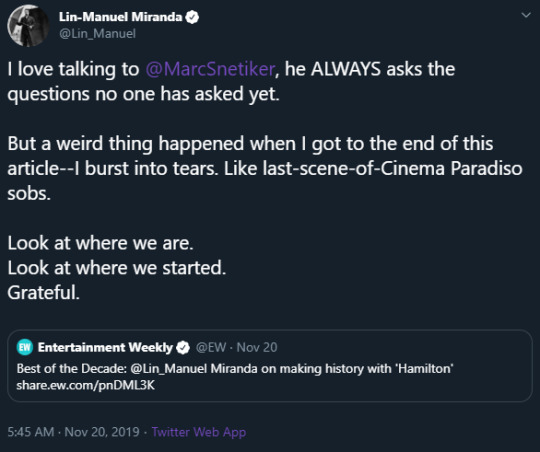
No 18th-century U.S. statesman had more sway on stage, more measure on music, or better brought the decade’s zeitgeist to its zenith than Treasury treasure Alexander Hamilton, the immigrant hero about whom Lin-Manuel Miranda spun a Pulitzer-winning, genre-defying, generation-defining Broadway musical that demanded, among other things, a renewed spotlight be shone on the theater as a cornerstone of American culture.
Since Hamilton’s February 2015 debut at the Public Theater and subsequent transfer to Broadway that summer, Miranda has had five years, three tours, half a dozen productions, hundreds of pre-show concerts, and a star-stacked mixtape to say just about everything he could about creating one of the biggest Broadway musicals of all time. And he’s heard everything you can hear about it, too.
“The thing that always trips people up is the incongruity of a hip-hop musical from this historical tone, which I always find surprising,” says Miranda, 39, whose previous Broadway successes included 2005’s Tony-winning In the Heights, 2012’s Bring It On the Musical, and the 2009 revival of West Side Story. “Because I live in musical-theater land, I know a disproportionate amount about Argentine politics because of Evita,” he continues. “I know about a failed revolution in France because of f—in’ Les Miz. I know what I know about the Constitution from 1776. To me it was not [out of place] to have a musical address historical subjects, and the musical forms I was applying to it were just musical forms I had been working hard to master. When I started reading [Ron Chernow’s 2004 biography of Hamilton] I thought, ‘Well, this will be my Jesus Christ Superstar. I’ll do a cool concept album and hopefully someone will figure out how to stage it.’ That’s not how it ended up panning out, but all I was looking to was tradition. I’ve been consistently surprised by how groundbreaking it has been perceived as because I feel like I’m just one in a long tradition of people who have used musical theater on unconventional subjects.”
...
With its 46-track album quick to become ubiquitous in every high school theater department across the country, a show about the might of the people swiftly belonged to the people. “Anecdotally, I heard from countless families who say Hamilton’s the only thing my family can agree on in the car — it’s not the teen’s music, it’s not the grown-up’s music, it’s sort of everyone’s music, and that has been thrilling,” Miranda beams. He’s heard tales of children with learning disabilities surprising their families by memorizing the words of the show, of kids with behavioral issues who found focus, relaxation, or solace in engaging with the libretto. “I think the tonnage of it is actually something that has its own legacy,” Miranda points out. “The fact that it’s literally so much show and so much music, it becomes this challenge for kids to wrap their minds around, the way my friends and I would memorize the Rent soundtrack and assign each other parts in high school a generation before. It’s done that for a new generation of kids, so that’s been really thrilling to see. More often than not, if someone is asking me for a signature or a selfie, it’s on behalf of their children. A lot of, ‘My kid would kill me if I didn’t ask for this photo.’”
And yet, it’s still tough to crack Miranda’s humility (and through the years, EW has tried). Miranda would sooner list 50 line-item debts he owes to Jay-Z and Les Miz and N.W.A. and ALW and Menken and Moreno and Method Man than praise his own impact or boast of the creative genius others have described him as having. Perhaps that’s why Hamilton’s crossover into the mainstream brought him along with it, into a stimulating new leg of a career that taps into his acting (His Dark Materials), songwriting (Moana), dynamic displays of dramaturgy (Fosse/Verdon), and even downright old-school showmanship (Mary Poppins Returns). But Miranda also uses his star power to redirect his spotlight elsewhere: on hurricanes, on history, on anxiety and artistry and the difficult intersection of both.
Only anecdotes (and EW) force Miranda to acknowledge how Hamilton did in fact change the game, especially in its electrified dialogue around the multiplicity of perspectives and representation in entertainment. He offers one such tale he particularly treasures: “I had seen Ava DuVernay’s A Wrinkle in Time in theaters opening weekend, and they actually quoted my words and the show — I will never forget that as long as I live — and I had the chance to meet her and she told me that when she first met with Disney about the movie, she said, ‘I hope you know I’m doing a Hamilton on this,’” Miranda recalls. “The fact that she used that as shorthand for ‘I’m casting this with actors of color and it’s all hands on deck’ — that was very, very moving to me. The fact that this show is cast the way it is and has been as successful as it has, I think broke down some kind of door. I hope we’ve ended the conversation about nontraditional casting in a very real way. There’s no going backwards now.”
Only going forward, into whatever creative heir to Hamilton lies in our 2020s and his future 40s. “I spent my 20s writing Heights and I spent my 30s writing Hamilton,” says Miranda, whose milestone ages are tied to the turn of the decades themselves (he’ll be 40 on Jan. 16, 2020). “I was actually pretty down at the top of this decade,” he recalls. “I remember the hangover after my 30th birthday party… it was a great party, but I just remember feeling like this was adulthood for real, and [not knowing] what’s going to happen. But it has also been the most fulfilling and joyous decade I’ve had so far. It’s been unreal.” And he’ll enter his 40s in similarly surrealistic fashion: In addition to a movie of Heights arriving in June, he’ll make his directorial debut helming a Netflix film adaptation of Tick, Tick… BOOM!, the 1990 musical by the late Jonathan Larson about a composer’s midlife anxiety over his artistic accomplishments. Miranda doesn’t need to point out the parallels. “We’re shooting ‘30/90’ the day I turn 40, so you wanna talk about decades? Jonathan Larson is almost exactly 20 years older than me, and to begin the decade telling his story, telling the story of the person who allowed me to believe I had a life in the theater? That feels like a really nice way to start.”
146 notes
·
View notes
Text
Remembering the Howard University Librarian Who Decolonized the Way Books Were Catalogued
Remembering the Howard University Librarian Who Decolonized the Way Books Were Catalogued
Remembering the Howard University Librarian Who Decolonized the Way Books Were Catalogued Dorothy Porter challenged the racial bias in the Dewey Decimal System, putting black scholars alongside white colleagues Dorothy Porter in 1939, at her desk in the Carnegie Library at Howard University. (Moorland-Spingarn Research Center, Manuscript Division, Howard University) smithsonian.com November 26, 2018
In a 1995 interview with Linton Weeks of the Washington Post , the Howard University librarian, collector and self-described “bibliomaniac” Dorothy Porter reflected on the focus of her 43-year career: “The only rewarding thing for me is to bring to light information that no one knows. What’s the point of rehashing the same old thing?” For Porter, this mission involved not only collecting and preserving a wide range of materials related to the global black experience, but also addressing how these works demanded new and specific qualitative and quantitative approaches in order to collect, assess, and catalog them.
As some librarians today contemplate ways to decolonize libraries—for example, to make them less reflective of Eurocentric ways of organizing knowledge—it is instructive to look to Porter as a progenitor of the movement. Starting with little, she used her tenacious curiosity to build one of the world’s leading repositories for black history and culture: Howard’s Moorland-Spingarn Research Center . But she also brought critical acumen to bear on the way the center’s materials were cataloged, rejecting commonly taught methods as too reflective of the way whites thought of the world.
Working without a large budget, Porter used unconventional means to build the research center. She developed relationships with other book lovers and remained alert to any opportunity to acquire material. As Porter told Avril Johnson Madison in an oral history interview, “I think one of the best things I could have done was to become friends with book dealers… . I had no money, but I became friendly with them. I got their catalogs, and I remember many of them giving me books, you see. I appealed to publishers, ‘We have no money, but will you give us this book?’”
Porter’s network extended to Brazil, England, France, Mexico—anywhere that she or one of her friends, including Alain Locke, Rayford Logan, Dorothy Peterson, Langston Hughes and Amy Spingarn, would travel. She also introduced to Howard leading figures like the historian Edison Carneiro of Brazil and pan-Africanist philosophers and statesmen Kwame Nkrumah and Eric Williams. As early as 1930, when she was appointed, Porter insisted that bringing Africana scholars and their works to campus was crucial not only to counter Eurocentric notions about blacks but also because, as she told Madison, “at that time . . . students weren’t interested in their African heritage. They weren’t interested in Africa or the Caribbean. They were really more interested in being like the white person.”
Howard’s initial collections, which focused mainly on slavery and abolitionism, were substantially expanded through the 1915 gift of over 3,000 items from the personal library of the Reverend Jesse E. Moorland, a Howard alumnus and secretary of the Washington, DC, branch of the YMCA. In 1946, the university acquired the private library of Arthur B. Spingarn, a lawyer and longtime chair of the NAACP’s legal committee, as well as a confirmed bibliophile. He was particularly interested in the global black experience, and his collection included works by and about Black people in the Caribbean and South and Central America; rare materials in Latin from the early modern period; and works in Portuguese, Spanish, French, German, and many African languages, including Swahili, Kikuyu, Zulu, Yoruba, Vai, Ewe, Luganda, Ga, Sotho, Amharic, Hausa, Xhosa, and Luo. These two acquisitions formed the backbone of the Moorland-Spingarn collections.
Porter was concerned about assigning value to the materials she collected—their intellectual and political value, certainly, but also their monetary value, since at the time other libraries had no expertise in pricing works by black authors. When Spingarn agreed to sell his collection to Howard, the university’s treasurer insisted that it be appraised externally. Since he did not want to rely on her assessment, Porter explained in her oral history, she turned to the Library of Congress’s appraiser. The appraiser took one look and said, “I cannot evaluate the collection. I do not know anything about black books. Will you write the report? . . . I’ll send it back to the treasurer.” The treasurer, thinking it the work of a white colleague, accepted it.
This was not the only time that Porter had to create a workaround for a collection so as not to re-impose stereotyped ideas of black culture and Black scholarship. As Thomas C. Battle writes in a 1988 essay on the history of the Moorland-Spingarn Research Center, the breadth of the two collections showed the Howard librarians that “no American library had a suitable classification scheme for Black materials.” An “initial development of a satisfactory classification scheme,” writes Battle, was first undertaken by four women on the staff of the Howard University Library: Lula V. Allen, Edith Brown, Lula E. Conner and Rosa C. Hershaw. The idea was to prioritize the scholarly and intellectual significance and coherence of materials that had been marginalized by Eurocentric conceptions of knowledge and knowledge production. These women paved the way for Dorothy Porter’s new system, which departed from the prevailing catalog classifications in important ways.
All of the libraries that Porter consulted for guidance relied on the Dewey Decimal Classification. “Now in [that] system, they had one number—326—that meant slavery, and they had one other number—325, as I recall it—that meant colonization,” she explained in her oral history. In many “white libraries,” she continued, “every book, whether it was a book of poems by James Weldon Johnson, who everyone knew was a black poet, went under 325. And that was stupid to me.”
Consequently, instead of using the Dewey system, Porter classified works by genre and author to highlight the foundational role of black people in all subject areas, which she identified as art, anthropology, communications, demography, economics, education, geography, history, health, international relations, linguistics, literature, medicine, music, political science, sociology, sports, and religion. This Africana approach to cataloging was very much in line with the priorities of the Harlem Renaissance, as described by Howard University professor Alain Locke in his period-defining essay of 1925, “ Enter the New Negro .” Heralding the death of the “Old Negro” as an object of study and a problem for whites to manage, Locke proclaimed, “It is time to scrap the fictions, garret the bogeys and settle down to a realistic facing of facts.” Scholarship from a black perspective, Locke argued, would combat racist stereotypes and false narratives while celebrating the advent of black self-representation in art and politics. Porter’s classification system challenged racism where it was produced by centering work by and about black people within scholarly conversations around the world.
The multi-lingual Porter, furthermore, anticipated an important current direction in African-American and African Diaspora studies: analyzing global circuits and historical entanglements and seeking to recover understudied archives throughout the world. In Porter’s spirit, this current work combats the effects of segmenting research on Black people along lines of nation and language, and it fights the gatekeeping function of many colonial archives. The results of Porter’s ambitions include rare and unusual items. The Howard music collections contain compositions by the likes of Antônio Carlos Gomes and José Mauricio Nunes Garcia of Brazil; Justin Elie of Haiti; Amadeo Roldán of Cuba; and Joseph Bologne, Chevalier de Saint-Georges of Guadeloupe. The linguistics subject area includes a character chart created by Thomas Narven Lewis, a Liberian medical doctor, who adapted the basic script of the Bassa language into one that could be accommodated by a printing machine. (This project threatened British authorities in Liberia, who had authorized only the English language to be taught in an attempt to quell anti-colonial activism.) Among the works available in African languages is the rare Otieno Jarieko , an illustrated book on sustainable agriculture by Barack H. Obama, father of the former U.S. president.
Porter must be acknowledged for her efforts to address the marginalization of writing by and about black people through her revision of the Dewey system as well as for her promotion of those writings though a collection at an institution dedicated to highlighting its value by showing the centrality of that knowledge to all fields. Porter’s groundbreaking work provides a crucial backdrop for the work of contemporary scholars who explore the aftereffects of the segregation of knowledge through projects that decolonize, repatriate and redefine historical archives.
Read More…
The post Remembering the Howard University Librarian Who Decolonized the Way Books Were Catalogued appeared first on TBNT Have The Solution.
from TBNT Have The Solution https://ift.tt/2Q1QbV1 via Article Source
2 notes
·
View notes
Photo
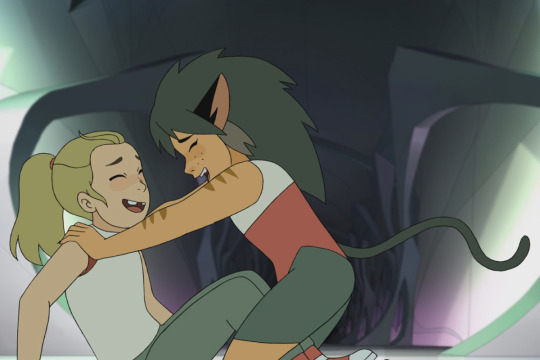
Inside the Groundbreaking Queer Reboot of ‘She-Ra’ | Rolling Stone
We’re all shaped by the myths we grow up with, whether it’s the stories we learn from holy books or Saturday morning cartoons. Kids who see themselves as the hero learn to center themselves in their own life stories. Kids who see their experiences relegated to the sidelines, or not represented at all, come away with a very different lesson — one that can take years to unlearn.
Which is exactly what makes a show like She-Ra and the Princesses of Power so vital. Since its premiere in 2018, Noelle Stevenson’s reboot of the cult Eighties cartoon has joined a revolution in the world of children’s animation, combining classic genre storytelling with diverse representation and a progressive worldview (see also: Nickelodeon’s The Legend of Korra, Cartoon Network’s Adventure Time and Steven Universe). In its fifth and final season, which dropped on Netflix last month, She-Ra rounded out its 52-episode run by centering a queer romance — specifically, between its hero, Adora, and her best frenemy Catra — and positing that such a love can, quite literally, save the world.
“I knew from the start that it wasn’t going to be easy,” says Stevenson, speaking via phone from Los Angeles. “Because this is She-Ra. To have the culmination of her arc be this lesbian love plot is a big deal! And I understood that. But I also felt that it was really important.”
The original She-Ra: Princess of Power was a 1985 Filmation spin-off of He-Man and the Masters of the Universe, which itself was based on a line of Mattel action figures. Set on the planet of Etheria, She-Ra follows a band of magical princesses in their rebellion against the Evil Horde, a totalitarian sci-fi regime bent on global domination. Adora is an ex-Horde soldier who joins the rebellion after she gains the ability to transform into She-Ra, a superpowered Chosen One with glowing blue eyes, a mystical sword, and a very cool outfit.
In 2015, when Stevenson, then 23, found out that DreamWorks Animation was looking for someone to pitch a new take on She-Ra, she jumped at the chance. She was already an Eisner Award-winning cartoonist and writer who had made a name for herself with works like her web comic-turned-graphic novel Nimona and the Boom! Studios series Lumberjanes.
“The world [of She-Ra] is so incredibly vibrant, and has so many powerful female characters. It’s this world that has all my interests rolled into one: It’s got the flying ponies and superpowers and all of these things that, immediately, I was like, ‘I want to do this. I want to be the one to do this,’” she says.
While Stevenson’s reimagination of the world of Etheria pays tribute to its predecessor, it includes some key differences. The reboot transforms the musclebound, scantily-clad grownups of the original series into awkward teens in much more practical (but still very sparkly) clothing. In addition to embracing a diversity of races, genders, and body types, the She-Ra reboot fleshes out the characters and their backstories, giving them fully-fledged arcs and complicating the good/evil binary of the original. The princesses of the rebellion aren’t simply heroic, and the soldiers of the Horde aren’t simply villains; everyone’s just a human being (or scorpion person or alien clone or flying horse, as the case may be) trying to make their way in a world that doesn’t offer easy solutions. It’s also, incidentally, really funny.
For Stevenson, it was crucial that the characters felt three-dimensional, and that it was their choices that guided the direction of the storytelling. “The characters all began with a deep personal flaw, and the process of making the show was kind of giving them the room to process those flaws. But we wanted it to feel organic. We wanted the characters to feel like real people that we knew,” she explains.
From the start, She-Ra’s most compelling tension was always between Adora (Aimee Carrero) and Catra (AJ Michalka), Adora’s childhood best friend who becomes her bitterest rival after Adora leaves the Horde to join the rebellion. In the show’s first four seasons, the two continually fight and reconcile and break apart again, their obsession with each other marking them as something more than frenemies.
“It’s a dynamic that I find really interesting: the attraction and the tension between the villain and the hero, especially when they know each other better than anyone. They love each other, but there’s something between them that cannot be overcome,” Stevenson says.
Stevenson always knew that she wanted the relationship between Catra and Adora to be a romantic one; but she had to walk a fine line, because she didn’t know if the studio would give her the go-ahead to put an explicitly lesbian love story front and center. At first, as in Steven Universe, Rebecca Sugar’s radically progressive series that aired its final episodes earlier this year, she steeped the world of the She-Ra reboot in queerness. The show features multiple side characters in same-sex relationships, characters who flout traditional gender roles, and even a nonbinary character (Double Trouble, voiced by transgender writer and activist Jacob Tobia).
Still, Stevenson, herself a gay woman, wanted young viewers to be able to see a queer relationship that wasn’t just incidental, but central to the plot of the entire series. “I’ve loved these stories my entire life, you know? I was a huge Star Wars and Lord of the Rings fan as a kid. But there weren’t a lot of characters that I felt personally represented by,” she says. “We love what makes these stories classic, but we’ve seen them all culminate in the same kind of romance so many times: The hero gets the girl, he gets the kiss, and then he saves the world. And it’s not just [swapping] the man and the woman for two women. You have to actually approach it from a standpoint of: How do you make these stories, at their roots, queer?
“So that’s what I was trying to do — for little queer kids to see that this is normal, that these are stories that can happen and that exist, and that can center them and make them feel seen and understood.”
Whether or not Adora and Catra’s romance would become canonical was in the hands of the studio, and it was a risk Stevenson couldn’t be sure it would be willing to take. So the show played a long game — hinting at a romantic dynamic between the two without making it explicit, for fear of disappointing fans in the end if they weren’t able to deliver. Fortunately, a groundswell of viewer support for a potential relationship between the characters — a phenomenon known in the fan community as “shipping” — allowed Stevenson to make a case to the studio for supporting the story she wanted to tell with She-Ra.
“Just as I had hoped, people started picking up on this tension and getting really passionate about it,” she says. “It was immediately one of the strongest fandom ships right out of the gate. And that was when I finally showed my hand and was like, ‘Look. We’ve got a bunch of people who, just off Season One, are really, really excited about the gay representation in this show. I have been planning for this. And here’s how it needs to end, and not just because I want a moment that everyone’s gonna talk about. It’s the logical conclusion of both their character arcs. They need each other.’”
Finally, after years of hedging their bets, Stevenson and her collaborators got the go-ahead from DreamWorks. “I really wanted it to be so central to the plot that if at any point they were like, ‘Oh, we changed our minds, we want to take it out again,’ they wouldn’t be able to, because it would be so baked in,” she explains. “The temperature is not always right, and depending on what’s happening in the world, not everyone wants to be the studio that sticks their neck out and makes a statement like this. You will get a flat ‘no’ sometimes. But if you bide your time, or you come at it from another angle, that can change. You just have to keep pushing.”
Feedback for the conclusion of She-Ra has been overwhelmingly positive both from critics and fans. Viewer support has been pouring out in the form of social media posts, YouTube reaction videos, and fan art and fan fiction. Stevenson, who first made a name for herself online with Lord of the Rings and Avengers fan art, has been blown away by the support from She-Ra lovers. “That’s how you know that you’re successful at what you set out to do — if people are getting inspired by the stories that you’re telling. I think that that’s the beauty of fan work, is that it’s an evolution of the genre. We take that inspiration and create something new all the time.”
Unfettered by restrictions, the final season of She-Ra is a tightly plotted, character-driven masterwork, featuring a slow-burn redemption arc, a harrowing villain, and a timely message about the power of love and unity against the forces of repression and tyranny. It’s a show about becoming kinder and more open in the face of unrelenting darkness, about banding together to prepare for the worst, but always hoping for the best in spite of overwhelming odds.
Stevenson says that she and her team began work on She-Ra in the aftermath of the 2016 election. “The veil was ripped off, and we had to reckon with a world that we hadn’t expected. And that theme of relying on each other and being stronger together became so much more relevant,” she recalls. “I remember writing one script after a particularly bad news day where it just felt like nothing was ever going to be OK again. It’s an episode where Adora realizes that there are supposed to be stars in the sky, and there aren’t any more stars. And as Aimee [Carrero] was recording the lines, she was crying, and we were crying, because we were all experiencing this together — the idea that things were changing in maybe irreparable ways.”
The refrain of She-Ra’s catchy-as-hell power-pop theme song is “We must be strong, and we must be brave.” According to Stevenson, that’s easier said than done; but the whole point of the series is that you have to try anyway. It’s a message that rings especially true at this moment in our world when it seems like everything is spinning out of control, and it’s all too easy to feel helpless.
“It always comes back to this — when you realize that there’s a great evil or a great darkness that won’t just go away from one fight,” Stevenson says. “It boils up, and it can be pushed back down, but it’s something that we’ll probably have to be fighting for the rest of our lives. That’s really hard to do, and it makes you really tired sometimes, and it can be really scary. But when you are surrounded by the people that you love, and when you have that love for the people around you, then that strength is possible.”
#she ra#she ra and the princesses of power#rolling stone#noelle stevenson#catradora#adora x catra#catra#adora#lgbtq#Jenna scherer#animation#cartoons#interview#representation
1 note
·
View note
Text
MDM570 Mastery Reflection (Week 4)
Outcomes and Knowledge
Over the course of the entire month the research conducted focused on the efficacy of motion within the context of design. Motion is a language of communication. The term includes a number of different processes which have multiple manifestations with varying degrees of complexity, involving various concepts that are historically explored within the disciplines of art and science. Designers are now, more than ever, constantly trying to determine how to use motion to make their messages more effective. Static media still has its place – effective communication requires both motion and non-motion – each has its degree of impact. The following is a reflection of the material, challenges and concepts learned throughout the Organizational Structures course from the perspective of the degree learning outcomes – connecting, synthesizing, and transforming; problem solving; innovative thinking; and acquiring competencies.
Connecting, Synthesizing, Transforming
The research conducted this month was guided by a combination of information provided by the course instructor, web searches, books, and searching through the Full Sail research databases. The focus of the research dealt with motion media. Sources were used that touched on this broad topic, but the major connection that was made this month was with regard to using motion media to communicate by engaging the senses. Connections were made between Taylor, Maher and Curtis. Taylor (2013) states that communication is the most overlooked aspect of design, but as a designer, the job is to transmit messages through various forms of media. The first part of this job is to find out what format is expected, then to determine the problem to be solved. Answering these questions will help the designer determine the best way to deliver content. Maher (2019) has a similar view in that engaging the senses demands the use of effects and storytelling – this is the path to breaking barriers in communication. Finally, Curtis (2002) argues that new media is a vital tool that is powerful in communicating its messages both literally and emotionally. These authors share similar viewpoints and as such, to apply this synthesis to the work this month, motion was used in each of the design challenges to create messaging that had more depth, and that could get more audience engagement. There were no variables encountered that affected the efficacy of these concepts. For more complex projects, my inexperience could be a variable that would make the messaging less effective, but that was not the case here.
Here is an example of the synthesis being applied to my work (applying movement to add depth to a message): Depression PSA
References:
Curtis, H. (2002). MTIV: Process, inspiration and practice for the new media designer. New Riders
Maher, K. (2019). Breaking barriers with motion design: How this genre earned its place in the spotlight. Computer Graphics World, 42(1), 54-57.
Taylor, A. (2013). Design essentials for the motion media artist. Focal Press.
Problem Solving
In design, a problem represents a fundamental object of concern (Beckett, 2017, p. 5), as opposed to hinderances that occur or wrenches that are thrown into one’s work. It is often posed as a question such as, how can one thing be done while some other thing is a factor? One design problem that the concepts learned about this month could solve is how can I communicate a message effectively using motion media? Two possible solutions are to use human-centered design and the narrative structure (empathy and storytelling) to create a message that moves its target audience While both concepts work together, design empathy is the most successful solution. This solution is the most successful because it is an approach to problem-solving that considers the human perspective through the entire process by using empathy which helps the designer make sense of what consumers are saying or hinting at (Dam & Teo, 2019). By positioning the problem near the solution, just like in the Nothing campaign, knowing what your audience responds to means you have to actually communicate with and listen to your audience.
Here is an example of the use of human-centered design(design empathy) from the Nothing campaign to solve a problem:
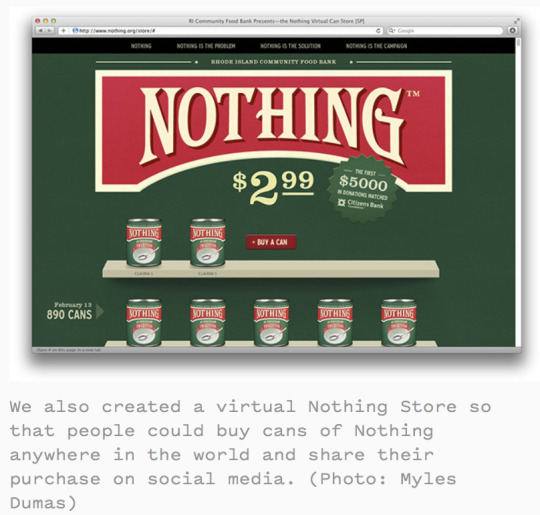
References:
AIGA. (2011). Nothing. AIGA. https://www.aiga.org/case-study-nothing
Beckett, S. (2017). The logic of the design problem: A dialectical approach. Design Issues, 33(4), 5-16.
Dam, R. F. & Teo, Y. S. (2019, April 6). Design thinking: Getting started with empathy. Interaction Design Foundation. https://www.interaction-design.org/literature/article/design-thinking-getting-started-with-empathy
Innovative Thinking
Innovation is not something one can hope to accomplish within the academic context; however, more innovative thinking occurs within the academic context simply because in markets and within the organizational structure, it is disruptive in nature. Innovation is the groundbreaking change that takes place that has not been done before, or at least has not been done the way you have done it but was still particularly effective. Innovative thinking, like innovation, is going beyond what is common practice or procedure; thinking outside of the box (Collins, 2018).
Compared to others in the industry, my work is a fair representation of what we were taught throughout this month. The main goal was to understand motion’s application in design and as such I created multiple projects using different forms of motion media to create messages that would move my target audience in each case. Since people tend to ignore what doesn’t directly affect them (AIGA, 2014) empathy had to be used in my designs to get an idea of what my audience was most likely to respond to. One particular example was with the animated logo. The icon in the animation represents community and inclusivity, which is a large part of Reykjavík culture. The way that the icons come together speaks directly to those concepts. According to Barnes (2016), when motion is applied to a static image, there can exist greater impact. Common practice here would have been to use a static logo. Below is an example the static logo; the animated logo can be viewed here.

References:
AIGA. (2014). Women Lead Initiative. AIGA. https://www.aiga.org/women-lead-initiative
Barnes, S. (2016). Studies in the efficacy of motion graphics: The effects of complex animation on the exposition offered by motion graphics. Animation 11(2), 146-168. https://doi.org/10.1177/1746847716637823
Collins, B. (2018). 3 Strategies for developing innovative thinking. Forbes. https://www.forbes.com/sites/bryancollinseurope/2018/06/25/innovativethinking/#28a38d867b88
Acquiring Competencies
Acquiring competencies is at the foundation of individual and collective success in the workplace (Gosselin et al., 2013). Overall, throughout this process I learned the communication is possibly the most important aspect of design – the transference of information from one place to another. A designer’s primary function is to transmit messages visually through various forms of media (Taylor, 2013).
Through the research this month, I was able to identify and understand at least 12 concepts that were relevant to this Organizational Structures course. These concepts can be categorized as academic or occupational, and then further categorized as either technical or conceptual.
Diegetic and non-diegetic sounds (occupational, technical) – These are what make up the sound design for a film (Bordwell-Thompsson, n.d.).
Static and dynamic media (occupational, technical) – The two types of media within the multimedia context, static is the things that don’t move, while dynamic is the things that do (Baldowski, 2020).
The structure of design employment – in-house, agency and freelance (occupational, conceptual) – Design jobs vary across these three structures, but arguably more than any other job, designers have to consider how where they work will impact the daily job. The wrong environment can hinder your creativity, but the right work environment can cultivate it (Flavin, 2017).
Persistence of vision (academic, conceptual) – In film and video, this phenomenon accounts for our ability to perceive a sequence of still images as a continuous moving picture (Krasner, 2013).
Motion graphics (occupational, technical) – This is a way to communicate to the viewer and add depth to a story (Scirocco, 2014).
Significance of typography (occupational, technical) – Typography exists to honor content (Bringhurst, 2019).
Selective attention (occupational, conceptual) – This is the process of directing our awareness to what is relevant while simultaneously ignoring what is irrelevant in the environment (Simons, 2010).
Hierarchies in motion (occupational, conceptual) - The human visual system analyses moving objects to arrange them in order of importance (Gershman et al., 2016). Motion helps orient users by showing how elements are related.
Human-centered design (occupational, conceptual) - This is an approach to problem-solving that considers the human perspective through the entire process by using empathy which helps the designer make sense of what consumers are saying or hinting at (Dam & Teo, 2019).
Visual communication (occupational, technical) – The argument for visual communication over the use of words is that visuals and markups make messages clearer (Boatman, n.d.),
Conceptual thinking (occupational, conceptual) – This is the ability to make connections between a design problem and what is implied, and abstract, with a message tailored for a specific audience is critical for the flexibility and innovation required by the global economy (“Design students,” 2011) in creating design solutions for an increasingly diverse market.
Purpose and the design solution (occupational, conceptual) - While there are rules in design, much of the work involves the designer’s intuition, or how they think and feel through a project (“How does,” 2016). As long as the design solution has a purpose and can be justified, it does not necessarily need to have followed the design rules.
References:
Baldowski, A. (2020, May 7). Week 1 Lecture 2. FSO. https://fullsail.zoom.us/rec/play/75IudOn9qmk3T9DH5QSDAP8vW9S5eKqs0XJK-PsJnUzmAHdQNVbwNeQXZ-FRdzydkbBLqyFYw4eRzw33?continueMode=true
Boatman, A. (n.d.). Why visual communication matters. TechSmith. https://www.techsmith.com/blog/why-visual-communication-matters/
Bordwell-Thompsson, R. (n.d.). The art and analyses of film sound design. FilmSound. http://filmsound.org/terminology/diegetic.htm
Bringhurst, R. (2019). The elements of typographic style (4th ed.). Hartley & Marks.
Dam, R. F. & Teo, Y. S. (2019, April 6). Design thinking: Getting started with empathy. Interaction Design Foundation. https://www.interaction-design.org/literature/article/design-thinking-getting-started-with-empathy
Every Frame a Painting. (2016, May 12). How does an editor think and feel? [Video]. YouTube. https://www.youtube.com/watch?v=3Q3eITC01Fg
Flavin, B. (2017, July 24). Where do graphic designers work? In-house vs. agency. vs. freelance. Rasmussen. https://www.rasmussen.edu/degrees/design/blog/where-do-graphic-designers-work/
Gershman, S., Tenenbaum, J. & Jäkel, F. (2016). Discovering hierarchical motion structure. Vision Research, 126, 232-241. https://doi.org/10.1016/j.visres.2015.03.004
Gosselin, D., Cooper, S., Bonnstetter, R., & Bonnstetter, B. (2013). Exploring the assessment of twenty-first century professional competencies through a business-academic partnership. Journal of Environmental Studies and Sciences, 3, 359-368. https://doi.org/10.1007/s13412-013-0140-1
Krasner, J. (2013). Motion graphic design: Applied history and aesthetics (3rd ed.). Focal Press.
Praxis in Landscape Architecture. (2011, November 12). Design students and conceptual thinking. Praxis in Landscape Architecture. https://praxislandarch.com/2011/11/12/design-students-and-conceptual-thinking/
Scirocco, A. (2014, February 21). The creative spark: Alberto Scirocco and the motion graphics of Leftchannel. Lynda. https://www.lynda.com/Video-Motion-Graphics-tutorials/Alberto-Scirocco-motion-graphics-leftchannel/153774/164032-4.html
Simons, D. (1999, March 10). Selective attention test [Video]. YouTube. https://www.youtube.com/watch?v=vJG698U2Mvo
Taylor, A. (2013). Design essentials for the motion media artist. Focal Press.
Reflection
According to the course description on the Full Sail website, in the Organizational Structures course, students learn to organize, process, and evaluate information obtained from their research. By creating media applications derived from earlier investigations, students utilize processes and workflow consistent with professional practice in many of today’s top design firms. Emphasis is placed on creativity, innovation, and bringing work to a professional level of execution. Students receive feedback on their work in a way that promotes teamwork and collaboration with peers. For the duration of this course, there were various discussions and concepts discovered about what it means to be a designer and what is at the core of the designer’s responsibility. I learned that communication is the most important aspect of design – a designer’s primary function is to transmit messages through various forms of media. We were also given a design challenge each week that allowed us to get practice in the various tools that we will be required to keep in our toolkits. The overarching focus of the course was conducting effective research and working with motion media.
The design challenge in week one was to create a 30-second ad in Adobe Premiere Pro, using video clips that were provided by the course instructor. This challenge was my first time using the application and it gave me a basic working understanding of the program, and the beginning of working with motion.
youtube
The design challenge in week two was to create a motion poster after completing training in Adobe After Effects. It was challenging because there was so much that had to be learned before I could actually start using the application. For example, first, there is certain terminology specific to After Effects – layer, property, keyframe, timecode, render, codec, and alpha channel, to name a few. However, having a basic understanding of these terms helped me to create the motion poster composition from beginning to export which will definitely help me with future client work.
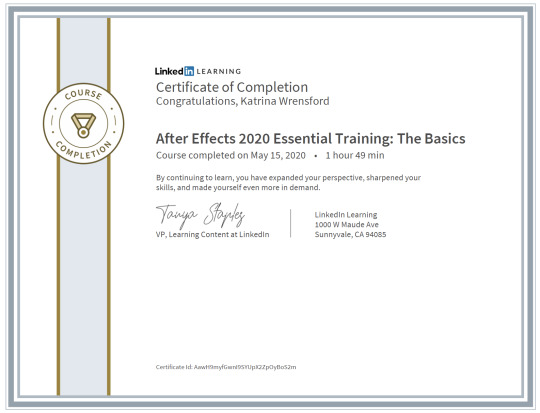
youtube
The design challenge in week three was to animate two logos. I learned how to import a logo from Adobe Illustrator and separate the layers to animate each one individually. This helped me to better create the message that I wanted to reach my target audience. I learned the basics of determining how my logo should be animated to grab my audience’s attention. Although my logos did not turn out exactly as I wanted them to, I have a tighter grasp on the Adobe After Effects application, and as I move forward, my skills here will only improve.
youtube
youtube
Finally, in week four, we learned how to work with different types of motion – parallax imagery, kinetic typography and cinemagraph. In this challenge we were tasked with taking our existing content and converting it into one of the aforementioned types of movement. I chose parallax imagery, which as an aside, reminds me of imagery in a 3-D movie. This movement method demonstrates just how effectively motion adds depth to formerly static content, ultimately gaining more interest and engagement.
Parallax Image 1
youtube
Parallax Image 2
Parallax Image 3
0 notes
Text
PARANORMAL IN POPULAR CULTURE
“Ssshh koi hai….”remember the chills which used to run down our spines when as kids we used to sit down in front of television screens at 11:00pm to watch these shows which now might seem more funny than scary, but you will have to agree that watching horror shows and movies have been one our guilty pleasures even though it does not let us sleep at night but we still love it, it is like going back to your toxic exes, it is dreadful but you cannot resist.
What we all can agree upon is that most of the information we have today about Ghosts, Spirits, Witches comes from their representation in popular culture which basically is through movies ,theater shows and folklore. The horror genre has been there in the movies for quite some time now, with the world’s first horror movie “THE HAUNTED CASTLE” made in 1896 and first Bollywood horror movie “MAHAL” made in 1946 which surely was long back and from then horror movies have been gaining popularity.
Our mothers have always been warning us to avoid watching horror movies since they were the ones who had to calm us down when we could not sleep at night after watching horror movies and our cries of “ mummy darr lag raha hai” met with “aur dekh bhoot aur chudailon wali picturein”, but did it stop us? Nahh. So here is the list of both Bollywood and Hollywood horror movies which you may like to watch for some sleepless nights:
.
MUST WATCH HORROR MOVIES IN BOLLYWOOD
1.13B
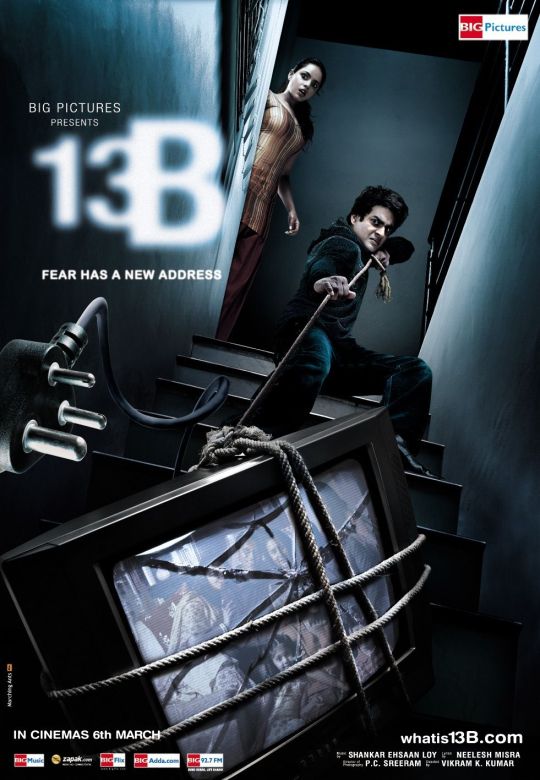
image source: click here
Yavarum Nalam titled 13B in Hindi is a 2009 bilingual (Tamil-Hindi) psychological horror film written and directed by Vikram Kumar, starring Madhavan and Neetu Chandra in the lead roles. The film revolves around a mysterious TV show that mirrors and reveals what will happen in the protagonist's family's life that day. Everything is great--lighting, sound, etc. The plot is fascinating and the unraveling of the story behind the TV serial's characters is eye-popping! The violent flashbacks and disturbed characters leaves the viewers horrified! Madhavan, as always, has given a sincere and outstanding performance! You feel terrified with him. 13B is a fine example of intellectual horror. It does not force feed the suspense, but allows the viewer to build their own overtime as the protagonist becomes aware of the unnatural forces manipulating his and his family's mentality to the breaking point
You can watch the trailer here:https://www.youtube.com/watch?v=-eWl5M-jqxs
2.Woh Kaun Thi(1964)

image source: click here
Woh Kaun Thi? is a 1964 black-and-white psychological mystery film directed by Raj Khosla, starring Sadhana Shivdasani, Manoj Kumar and Prem Chopra. The film was a hit at the box office. Woh Kaun Thi was one of the most scariest Hindi film of that time. The script is tense, interesting and twisted, at times so much that there isn't a possible solution one would offer. The writers try to lead the audience to one particular prediction, but the movie is still highly unpredictable. The movie is aided by some melodious songs composed by Madan Mohan and sung by Lata Mangeshkar. The song shayad ‘lag jaa gale phir ye haseen raat ho na ho’ is about 50 years now and has been and would always be an all time favorite forever, for all years to come. Splendid performances by Manoj & Sadhana and certainly haunting tale from Raj Khosla.
3.Mahal(1949)
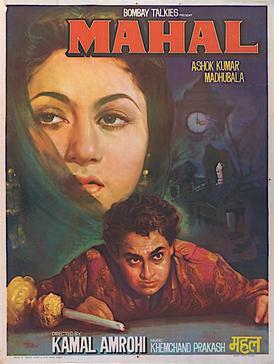
imagesource: click here
Mahal is a film directed by Kamal Amrohi and starring Ashok Kumar and Madhubala. It was India's first reincarnation thriller film. The film was included in the British Film Institute's list, "10 great romantic horror films". The movie was a groundbreaking supernatural suspense thriller and one of the earliest known films dealing with reincarnation. Mahal became one of the biggest box office hits of 1949 in India and paved way for Indian gothic fiction.
Why MAHAL was one of the most iconic Bollywood horror movie: https://www.cinestaan.com/articles/2018/jan/17/10442
4.PIZZA

image source: click here
Pizza is a 2012 Indian Tamil thriller film written and directed by debutant Karthik Subbaraj. Pizza tells you a story of a pizza-delivery guy who gets entangled in a story of horror, love and deception. The first part is a juxtaposition of initiation, life and horror. While the second half is where it gets horrid, severe and mind-blowing. The performances of the main leads was great and well maintained too. Special effects were at peaks along with the background score. The climax was great revealing all the twists and turns in the story.
5. TUMBBAD
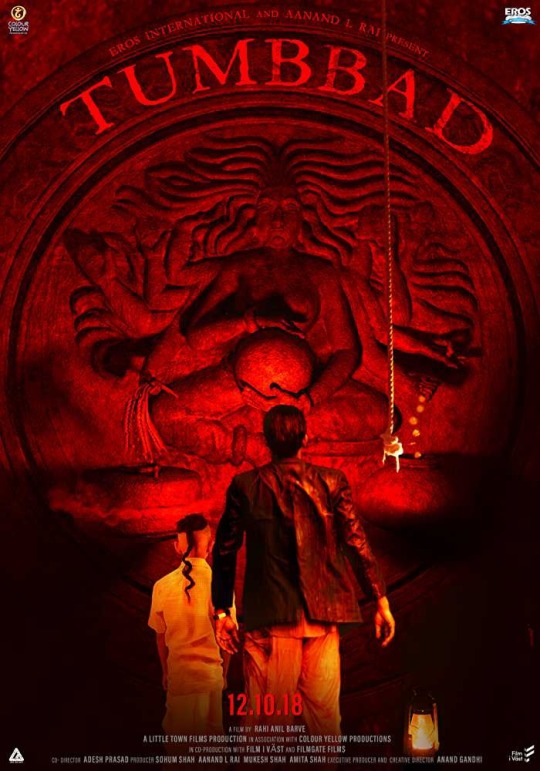
imagesource: click here
This movie has raised the standard among all the horror movies which have been produced and released in India till now. It is something our film industry never produced before. The beauty and horror of this film will stalk you and will capture your mind. The story revolves around God Hastar and his greed for wealth. This is a period film which is based on pre and post-independence period. As the movie progresses the story becomes more gripping and fascinating. There are no big faces in this movie. The actors have done their job brilliantly. There are no big actors in this movie still it made stand out among other horror movies. The score of the music is composed by none other than Ajay-Atul. They have done their job brilliantly. The background music helps the story to move in right direction and make the plot for gripping. Visuals are astonishing, stunning and marvelous which helps the movie to go with the flow.
Movie Review :https://www.youtube.com/watch?v=SBRS6lEDsaY
6.MAKDEE
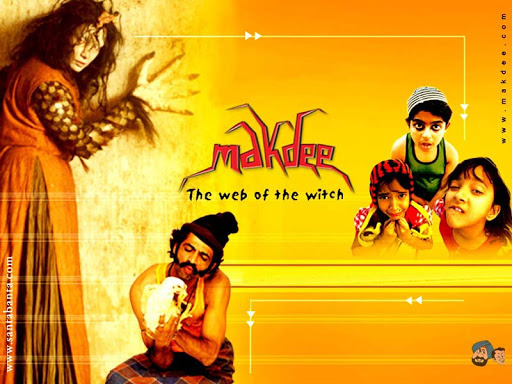
image source: click here
This is an excellent movie not only for kids but also for elders. This movie runs around two about 10 years old identical twin girls and a myth in the village. One sister in simple and the other one is naughty. The myth is about a Churhel (Evil Soul) in the village. The naughty sister teases & make fun of the other one but when the other one falls in a serious trap, the naughty one plays with her own life to save the other. This is a fun filled movie. A pure and healthy fun and also gives a good message to kids in the end. The songs are lovable. Particularly kids will enjoy the movie. The acting of the girl artist is excellent. Shabana Ajmi is there in a different role. The direction of the movie is great. A must watch for sensible cinema viewers.
MUST WATCH HOLLYWOOD HORROR MOVIES
1. Psycho(1960)

image source:click here
Released in 1960 Psycho is one of the finest films ever made and the greatest horror film of all time features dark, twisted and thrilling storytelling and masterful direction from the master of suspense Alfred Hitchcock, Psycho is now a legendary film.
A Phoenix secretary embezzles forty thousand dollars from her employer's client, goes on the run, and checks into a remote motel run by a young man under the domination of his mother.
2. The Exorcist(1973)

image source: click here
The Exorcist rides its supernatural theme to magical effect, with remarkable special effects and an eerie atmosphere, resulting in one of the scariest films of all time. With great performances and creepy moments, The Exorcist is a classic.
When a 12 year-old girl is possessed by a mysterious entity, her mother seeks the help of two priests to save her.
https://www.factinate.com/things/26-chilling-facts-exorcist/
3.The Conjuring

image source: click here
The Conjuring is a 2013 American supernatural horror film directed by James Wan and written by Chad Hayes and Carey W. Hayes. It is the inaugural film in the Conjuring Universe franchise
A very effectively mounted fright fest, played extremely straight, with very good performances. This movie is hugely enjoyable, genuinely scary horror flick. This is a horror film where a pair of suddenly clapping hands gives you the heebie-jeebies, and James Wan doesn't cheat with his jump scares.
4.ROSEMARY’S BABY

image source: click here
A frightening tale of Satanism and pregnancy that is even more disturbing than it sounds thanks to convincing and committed performances by Mia Farrow and Ruth Gordon that results in one of the finest horror movies of all time that features excellent direction and cinematography.
A young couple moves in to an apartment only to be surrounded by peculiar neighbors and occurrences. When the wife becomes mysteriously pregnant, paranoia over the safety of her unborn child begins to control her life.
5. ALIEN

image source: click here
A modern classic, Alien blends science fiction, horror and bleak poetry into a seamless whole. With claustrophobic thrills and chills and an empowering performance from Sigourney Weaver, Alien is a horror classic.
After a space merchant vessel receives an unknown transmission as a distress call, one of the crew is attacked by a mysterious life form and they soon realize that its life cycle has merely begun.
So these were some of our top picks from IMDB and would advise you to watch them at your own risk because these movies are surely not for people with weak heart(or people who close their eyes when the ghost is on screen) and please watch these movies with a huge group of friends or family and if you are one of those people who can watch such movies alone then I have nothing but respect for you.
LET THE FEAR TAKE OVER!
You can read about some spooky behind the scenes things that happened on the sets of some horror : Click here
SOURCES: one, two, three, four ,five ,six
1 note
·
View note
Text
Love in the Comics: The Star-Crossed Story of “Negro Romance”
Love in the Comics: The Star-Crossed Story of “Negro Romance”
By Neely Tucker
Published February 10, 2020 at 11:28AM
Panel from “Negro Romance” #2. Art: Alvin Hollingsworth. Serial and Government Publications Division.
Hayley Salvatore, an intern in the Office of Communications, contributed to this post.
It’s so romantic!
Gloria, pretty and hard-working, goes for a walk in a city park and meets kind and handsome Lloyd. Sparks fly! He takes her to meet her mom, who works nearby, then gently holds her hand, walking her home. Dinner, perhaps?
“I looked up into the tenderness of his eyes and my heart whispered a secret question,” Gloria wonders. “Had I really met this enchanting man only hours before – or was it a week – or a century?”
Such was the starry-eyed summer fling of “Negro Romance” — the only black romance comic ever printed between the 1930s and the 1950s, known as America’s Golden Age of Comics. It was startling and rare for its positive depiction of African Americans in the era, particularly in its portrayals of young black women as romantic heroines. But groundbreaking as it may have been, the magazine lasted just three issues in 1950 and then, with exception of one issue reprinted in 1954, almost completely disappeared from history.
So as Valentine’s Day approaches, we are delighted to report that the Library recently acquired issues of “Negro Romance” #2 and #3, thus completing the only known collection of all four issues. The comic is so rare – only two other libraries are known to have even a single copy – that Michelle Nolan, author of “Love on the Racks: A History of American Romance Comics,” estimated that “there are likely fewer than 50 copies extant of each issue” in a recent phone interview.
“In my 50-plus years of work with comics,” she said, “I don’t think I’ve seen a dozen copies of ‘Negro Romance.’ ”
Megan Halsband, a reference librarian in the Serial and Government Publications Division who helped direct the acquisition, said the completed collection offers a unique look at America at mid-century. For example, there are few white people depicted in the comic, subtly documenting segregation. The comic, written by Roy Ald, who was white, and drawn by Alvin Hollingsworth, who was black, does not traffic in demeaning stereotypes, caricatures, or dialect, contrary to the prevailing norms in pop culture.
“The research value is extraordinary,” Halsband said, “because it’s so rare for positive representations of African Americas to appear in comic books during this period.”
The Library already holds the nation’s largest publicly available collection of comics, with some 12,000 titles and 150,000 issues. Finding all four issues of this comic took six years. Issue #1 was purchased in 2014. Issue #4 (the 1954 reprint) was included in the Stephen A. Geppi Collection, acquired in 2018. Then, last September, issues #2 and #3 surfaced at a New York-based auction house. The Library jumped at the opportunity, said Halsband.
Starting in March, the Library will display issue #1 in the exhibition “Comic Art: 120 Years of Panels and Pages.”
“Negro Romance” #1. Serial and Government Publications Division.
“Negro Romance” flickered into life during a rush of romance comics in 1950, as publishers such as Fawcett, Marvel and Fox sought to hook young adult female readers. After “Young Romance” started the genre in 1947, the field erupted into nearly 150 romance titles in the early months of 1950, Nolan writes in “Love on the Racks.” That equaled thousands of issues on newsstands and spinner racks at once. Amid this deluge, Fawcett came up with “Negro Romance” #1 in June, #2 in August and #3 in October.
Each 36-page issue featured a glossy cover photograph of an attractive, well-dressed young couple. Inside, on pulp paper, were three soap-opera tales of love, deceit, treachery and romance. With stories such as “Love’s Decoy,” “Possessed,” (that was Gloria and Lloyd), “Forever Yours” and “Spite!” it trod familiar territory– a handsome beau, a lithesome beauty and lots of drama. The difference was that the lovely dames and dashing gents were black, middle-class, bound for college or working professional jobs.
In a way, it was shocking.
Blacks, when mentioned at all, did not get such treatment in pop culture, still in the throes of the Jim Crow era. The Supreme Court case Brown v. Board of Education, which struck down legalized segregation, was still four years away.
Qiana J. Whitted, author of “EC Comics: Race, Shock, and Social Protest” and director of African American Studies at the University of South Carolina, notes that racism was brutal in comics of the era. There were the “savage” Africans featured in Tarzan and other jungle comics. Captain Marvel had a sometime sidekick named Steamboat, who had huge pink lips and spoke in dialect. “Li’l Eightball,” a caricature of a coal-black child (again, with the lips) who appeared in “New Funnies,” was so offensive that even schoolchildren complained, ending its run.
Still, there were larger cultural forces at work. The preceding decade had seen black authors have unprecedented success, as Richard Wright and Ann Petry had runaway bestsellers with “Native Son” and “The Street,” respectively. Black newspapers were thriving, including comic strips with black characters. Magazine publisher John H. Johnson started his iconic “Ebony” in 1945. Jackie Robinson and Joe Louis were two of the biggest sports stars of the age and each had a short-run comic devoted to their bios. All-Negro Comics, the first comic book by an all-black staff, ran for one issue in 1947. It would be another 45 years before another comic with all black creators was published by Milestone Comics in 1993.
So, while pop culture was very much segregated, publishers understood that black readers were out there. Their plan, Whitted notes, was to take established genres – sports, romance – “and see if we can reach out to black audiences who we know already buy our comics, but don’t have titles targeted to them,” she said.
No one now knows how many copies were printed of “Negro Romance” or where they were distributed. There is no apparent mention of it in contemporaneous literature, journalism or personal memoirs.
The first panel of the first story of “Negro Romance” #1. Art: Alvin Hollingsworth. Serial and Government Publications Division.
Still, it’s clear that the stars did not align for “Negro Romance” in the tempestuous world of comics, where few titles ever made it past a dozen issues. Of the 147 romance titles published in the early part of 1950, at least 117 were dead before the end of the year, Nolan writes. Fawcett started four romance titles that summer. None survived past autumn.
“June of 1950 was the ultimate kiss of death,” Nolan says. “Any romance comic that started in mid 1950 was doomed.”
Still, it’s nice to think that 70 years after Gloria and Lloyd fell in panel-by-panel love, the short-lived adventure that was “Negro Romance” has finally found a happily-ever-after home of its own.
Subscribe to the blog— it’s free! — and the largest library in world history will send cool stories straight to your inbox.
Read more on https://loc.gov
0 notes
Text
It is what it is (so here we are)
I've just said recently that I do still see implicit Johnlock, and even if I'm not blindingly happy with S4, then at least I'm not turned off from the canon (just from fandom, but then it doesn't take much). I enjoyed it a lot, particularly the pulp genre stuff and the clever bits. It's hard to remember when I'm on Tumblr, but I did. It's my sort of thing, story-wise. Of course, it could have been more. And I do think it *should* have been more. But it is what it is. I want to celebrate that and not drown in negativity for the characters I adore and writers I still admire, but at the same time, I'd certainly like to support fair critiques. And in that spirit, I feel the need to push back against the negativity directed at all the people who expected implicit subtext to become explicitly canon, and are now disappointed. Quite rationally so.
Basically, I feel sort of on the fence right now. As I recently said, in many ways, TJLC as a fandom phenomenon has left me behind. And I do understand @unreconstructedfangirl's frustration at the state of fandom-- squee harshing has been an understatement, and my own squee balloon is definitely in danger of popping. But frankly, I'm never going to apologize for having been a TJLCer (and other people's beliefs or behavior have nothing to do with me; I claim neither fault nor credit). Just because some people do things one disagrees with doesn't mean a title (eg, feminist) shouldn't apply to everyone else, so I'd embraced the TJLC label although I had usually referred to it as 'canon Johnlock'. To me, it's simply been about analyzing the direction of a TV show to the best of my ability. It turned out that it wasn't as internally consistent or as groundbreaking a narrative as we all thought (and hoped), even though it remains a wonderfully made, clever, fun and moving story that I'll always love.
I feel very entitled to speak about this 'cause I know 100% I'm not being hormonal or emotional. I'm absolutely not speaking out of shippy feeling (though of course I have feelings). This isn't about feelings for me, and it's not about shipping. It's continuously frustrating that after all this time, Johnlock-friendly people in fandom still think this is about shipping. Canon Johnlock was the result of my *analysis* and my understanding of narrative construction concepts as a writer and critic. In my reasoned opinion, this awareness should be part of the analysis of the show's character arcs made by any halfway intelligent or literate person. This actually includes Moffat and Gatiss, even *if* the subtext wasn't intentional (which I find very hard to believe). The fact is that the overall narrative doesn't really make sense unless you integrate the subtext of the show, and that subtext is that John and Sherlock have romantic feelings for each other. This is explicitly referenced by many characters, supported by multiple mirrors, and overall just hammered into the textual themes and is central to Sherlock's humanization arc.
To make it absolutely clear, this isn't about my fangirl's shippy need to see John and Sherlock kiss and live happily ever after. I literally do not even *care* about my favorite characters' happiness: I'm an angst fan. I also don't really care what fandom does or *can* do in terms of shippy fanworks based on the text. I can never really relate to such arguments, or be glad canon Johnlock wasn't actualized for the sake of fannish diversity. Honestly, I find such claims to be derailing. I do love the fandom's creativity and I enjoy many, many different types of fanworks. But the fact is that I'm a canon-whore through and through, and I was *talking* about canon when I talked about TJLC and canon Johnlock.
So basically, talking about what fandom needs or could/couldn't use in fics is just alienating to the point of being meaningless to me. I don't see why it's relevant or why I should prioritize this in my analysis of a relationship I consider purely on its canonically-based merits. I also think that whole conversation can get especially derailing when we were talking about representation, which is (of course) a whole other kettle of fish, but not one to ignore or hand-wave. Certainly, it's not something to hand-wave like the BBC has done recently, with references to the creators' attention to queer charities. However, neither is it something to use as social capital in fandom wank, with constant references to being queer yourself or any other kind of 'queer cred'. This isn't about your and/or mine and even Mark Gatiss's queer cred (or the lack thereof). The very *idea* of queer cred and all the ways people from the BBC all the way across fandom feel the need to be defensive about it is fundamentally derailing. This is about the *story*, and secondarily-- but not less importantly-- about its impact on and meaning for its (often queer, often young, often vulnerable) audience.
Personally, I just want good, consistent writing that makes sense, that builds on its own themes and honors and develops the characters. I will admit, of course, that emotional pay-off and resolution is part and parcel of what makes fictional suffering work in an arc, unless you're writing a tragedy. Needless to say, Series 4 did not offer this-- not simply for Johnlock shippers, but for anyone who wanted to feel the pain in Series 3 and 4 was 'worthwhile'. I say this even though I personally don't really need such pay-off; I'm a cold-prickly type reader who's generally happy with implicit emotional resolution, but it's not how most audiences work, as any good writer would be aware. Story arcs come to explicit conclusions because that's how good stories work, not because that's how shippers want them to work. This may not always be relevant, but BBC Sherlock is *already* a Western-style genre narrative in the classic style, filled with many romantic cliches and queer-coded up the wazoo. It's already a traditionally structured narrative, and its main characters are already shown to be in love to anyone not being strictly limited by heteronormativity. Even people who don't label themselves 'TJLC' get this, either due to literary analysis literacy or a willingness to see what's right in front of them. Given that, the disagreement was only ever about the likelihood of there being an explicitly romantic resolution by intent. However, the fact is that regardless of Moffat and Gatiss's intent, good writing means following your characters' lead rather than doing what you apparently always wanted, whether it's to do with only 'flirting with the homoeroticism' in the narrative, the direction of the character arcs or plot-wise.
Of course, I disagree with many of the critiques that say TFP represented a complete break in characterization, and I agree with Ivy that TFP did work as a resolution of Sherlock's main arc; I also agree that it opens the door to resolving the 'rifle on the wall' of Sherlock's avoidance of romantic entanglement. Further, I don't really think Mofftiss have some sort of direct responsibility to their fans or to the world, and of course they should be free to write the story they wanted to write (just as others are free to critique). But at the same time, Moffat himself has said that good writing is "defined by whether or not you've written or created something people want and like", and it's not supposed to be self-indulgent. It's *supposed* to consider the audience, on his own terms. He's also called himself a fanfic writer, and he's failed his own measure of what makes a good fanfic work: writing "for other people". That approach is definitely not consistent with the fact that they admitted at SDCC in July that TFP was 'insane wish-fulfillment'. This is not up to the standard Moffat and Gatiss have set for themselves during the run of the show.
Like I said, though, I'm definitely on the fence-- I'm torn, because of course I *enjoyed* Series 4 and I'm not really that confused except insofar as wondering why Moffat and Gatiss have so often felt the need to deny what's clearly intentional subtext placed with care and affection into the narrative by the entire team. I'm definitely not enjoying the fandom imploding, or the fact that it feels pretty lonely around here in the post-S4 fangirl bunker. But the negativity about canon Johnlock is no more rationally justified simply because it has not actually happened (I mean *only* rationally, of course; obviously, irrational reactions due to bad blood are eternal). I'm definitely frustrated with the fact that I'm still one of the 'delusional fangirl' brigade when it comes to BBC Sherlock, even though I know perfectly well how rational I am. I will not be gaslighted so easily. And I've just tried to see the straight!John in ASiB, but it's just too hard. There's no way all that's an accident, somehow. So here's what we're left with, after TFP and the end of Series 4 of Sherlock: the good and the bad. And while I still think the good included implicit Johnlock, the bad unfortunately did include queer-baiting.
#fandom meta#me myself and i#the great divergence#tjlc#sherlock feels#oh fandom#series 4#sherlock spoilers#reader response#narrative#queerlock#johnlock feels
28 notes
·
View notes